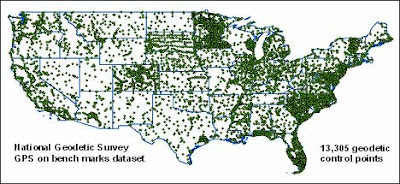
Figure 4. A dot map of 13,305 National Geodetic Survey benchmarks across the continental United States. Each benchmark has an associated high-precision GPS unit used to calibrate and reference the USGS’s National Elevation Dataset of DEM’s.
This week, I was searching for DEM’s in another class and came across this map on the USGS’s website. I didn't know how much effort and equipment the USGS uses to calibrate its DEM's. Apparently, accurate elevation datasets are only necessary in highly populated areas; sparsely populated regions have few GPS benchmarks.






